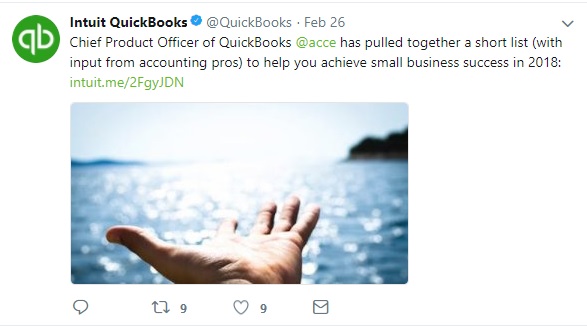
 Why your small business blog needs an editorial calendar, and a step-by-step how-to create an editorial calendar for your content marketing planning process
Why your small business blog needs an editorial calendar, and a step-by-step how-to create an editorial calendar for your content marketing planning process
It’s no secret that content marketing is becoming ever more essential to running a successful business. If the phrase “content marketing” sound overwhelming and complex, however, fear not! For most small businesses, a simple blog is sufficient to execute an effective content marketing strategy.
Although a blog can be a simple and straightforward project, it still requires effort, direction, and strategy. Blogs that are months out-of-date, disorganized, or full of duplicate or generic content may do more harm than not having a blog at all. To keep customer interest and to maximize conversions through blog content, a regular posting schedule, clear categories, and new and unique content is absolutely necessary.
This is the beauty of an editorial calendar: it holds direction and schedule in one place that can be easily changed and adapted to meet changing needs. It allows multiple people to work on the blog as a cohesive project rather than a haphazard attempt to produce content.
In this article we will cover the essentials of an editorial calendar, the steps to create one, and some tools for hosting the editorial calendar.
Essentials of an Editorial Calendar
Regular Posting Schedule
The best blogs post at regular intervals – devoted readers can know when to expect new content, and new visitors will see an active and consistent business. While many high profile blogs with large readership, like TechCrunch, may post daily or even multiple times a day, small business blogs can easily start with posting just once or twice a week.
It’s best to determine a set date and time to release new content, as this helps manage deadlines and workload and integrates content creation into a regular week of work. BambooHR, for example, has a set posting schedule of every Tuesday and Thursday. Blog readers can expect new content regularly, and new visitors will see the consistency as a sign of organization and trustworthiness.
Flexibility
While the posting schedule should be predictable, it is always good practice to have room for change as needed. If a major news story breaks in your industry, such as a new law or regulation passed that may affect your product or your customers, don’t add that to the end of the editorial calendar!
A good recent example of this is the Barnes & Noble Sci-Fi and Fantasy blog, which posted a tribute to celebrated sci-fi author Ursula K. LeGuin just a day after her death in January:

Had the Barnes & Noble editorial calendar been more rigid, this post may have been published too late to capitalize on the timeliness of this news, which was likely of great interest to the science fiction aficionados that follow this blog. This kind of news-relevant content is invaluable in connecting with customers and their interests and demonstrates and true understanding of the target audience.
Integration with Social Media
Some companies separate their social media calendars and their blog calendars, even if they are run by the same person. Merging them makes content creation and promotion so much easier! All blog content should be promoted on social media – certainly when it is first published, and perhaps also a few weeks on or when that post becomes relevant again due to news trends.
Intuit Quickbooks does this well, sharing every blog post on their Twitter feed as it is published:

Make social media integration simple by drafting tweets or Facebook posts for each blog post as it is written and scheduled in your editorial calendar. This way, your publishing process includes steps for sharing on social media rather than thinking of it as a separate task.
What’s in an Editorial Calendar Entry
Any entry on the editorial calendar absolutely must include the following:
- Date and time of publication
- Title and author of content
- Images to use or acquire
Here’s an example of what an entry might look like on Trello:

Depending on your blogging strategy and needs, calendar entries can also include target keywords, reference articles, and social media directions.
Steps to Create an Editorial Calendar
Determine Your Schedule
Establishing a posting schedule depends on a variety of factors – how much time can be devoted to content creation, how often your target audience will read the content, and how much content can actually be created on your topic. When first starting out, once a week is a sufficient posting interval. While you may have a ton of ideas and want to get them out immediately, posting three times a week right off the bat will lead to burnout and exhaust your content topics list far too soon.
Brainstorm Blog Categories and Posts
Fill that calendar up with content! You’ll need categories and specific post topics. Write down all the possible ideas for blog posts you can think of, then cross out the ones that truly won’t work. After generating 10-15 post ideas, sort them into three or more broad categories that will serve as long term categories. Or, come up with five or so broad categories first, and then come up with more specific post topics underneath those umbrellas.
TransUnion’s ShareAble for Hires is an excellent example of a blog with just a few very specific categories that guide the reader to exactly the information they are seeking. Having such specific categories can also aid in the brainstorming process.

In addition to having a variety of post topics and categories, be sure to vary the types of content you host on your blog. Creating complex infographics may be out of reach for some businesses starting out with limited resources, but the variety that comes from alternating between explainer posts, listicles, and how-to articles is still extremely valuable.
Additionally, alternate your category topics. You can rotate these categories regularly if it helps, but overall simply be attentive to how often you post in each category to ensure a variety of content.
For more ways to brainstorm great blog content, check out this resource from Heidi Cohen.
Fill in the Calendar Two Months Ahead of Time
Bring the posting schedule and topic list together in your calendar to see a vision of the overall blog strategy and plan ahead. Simply enter one post topic per week (or whatever interval you have determined) along with any other additional information needed to create the post. It’s good practice to fill in the editorial calendar with all the ideas you have fully developed and continue to add to it as you go. Try to be 2-3 months ahead.
Make the effort to create five or six posts right away and schedule them out on your site host. Don’t leave anything unfinished lest you forget to go back and edit it and accidentally publish a piece with errors or missing pieces. Once you have six weeks of content scheduled out, you can simply incorporate content creation into your weekly workload. The six week lead time will allow you to adapt your strategy as needed and provide a cushion should something unexpected happen and you miss a couple weeks of producing new content.
Tools for an Editorial Calendar
Now that we’ve covered everything that should go into an editorial calendar, where does it all live? While some may still feel comfortable with an old-school approach of hand-written entries and post-it notes to move around, going digital ensures that anyone who works on the blog has access to the most up-to-date information about the editorial calendar. Below are two suggestions for taking your calendar into the cloud, but for more suggestions, check out this list from Writtent.
Trello
Trello is a free software for lists and organization that offers a moveable visual layout that can be categorized and adjusted. While the software is designed for more than just editorial calendar creation, it lends itself well to that task. Markerly has a guide to creating an editorial calendar in Trello available here.
Google Suite
For a simple and convenient option, Google Calendar can be the best option for creating an editorial calendar. It can be easily shared among multiple people and incorporated with Google Docs and Google Sheets to track all content simultaneously. Madison Miles Media discusses how they use Google Sheets for their editorial calendar in this article.
Of course, for an editorial calendar to be truly effective it must be consistently maintained. Be sure to set aside time each month at least to update the editorial calendar. As you start out, be willing to adapt your methods and strategy while you figure out what works for you and your team to brainstorm and organize your content.
For further reading on editorial calendars, check out this resource from the Content Marketing Institute.
Editorial Staff
Latest posts by Editorial Staff (see all)
- Adapting Regulatory Frameworks to the Challenges of Financial Industry in the Digital Era - March 19, 2024
- How to Sell Company Merch Online With Print on Demand - March 11, 2024
- Unlocking Easy Ways To Start A Successful Fitness Brand - February 15, 2024
- The Impact of Digital Transformation on Traditional Business Models - November 8, 2023
- Personal Trainer Marketing Strategies And Tips - November 6, 2023
